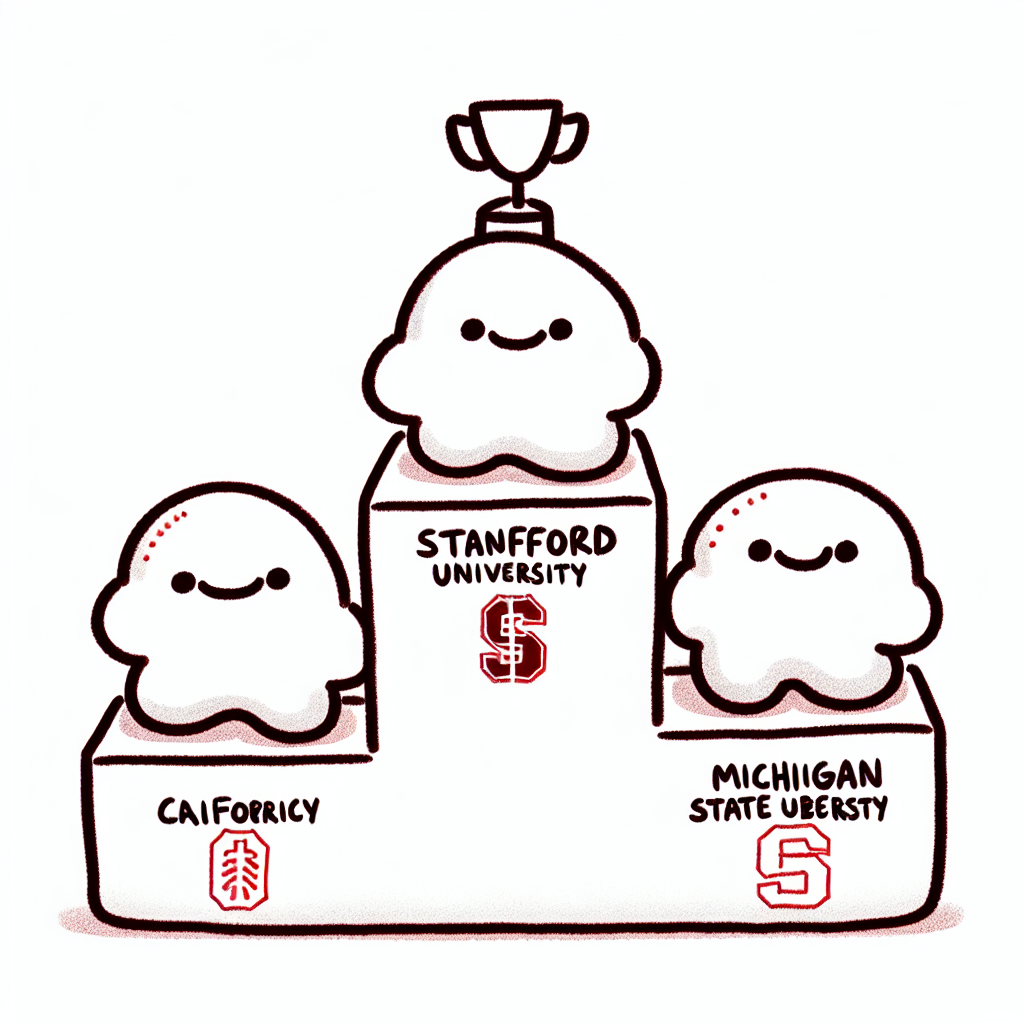Introduction
The landscape of global higher education is constantly evolving as universities adapt to new challenges, technologies, and societal needs. In this dynamic environment, university rankings have become a valuable tool for assessing academic excellence, research output, and overall impact on society. These rankings help students, educators, and policymakers make informed decisions. This guide explores the top universities in the world, examining how they perform across various criteria and ranking systems.

🌍 Global University Rankings: An Overview
Times Higher Education (THE) World University Rankings 2025
The University of Oxford holds the top spot in the Times Higher Education (THE) World University Rankings 2025, a record-breaking achievement that underscores its academic excellence. THE rankings evaluate institutions based on five key performance indicators: teaching, research, citations, international outlook, and industry income. These criteria aim to provide a comprehensive assessment of a university’s performance on a global scale. Source
US News Best Global Universities Rankings 2025
In the 2025 US News Best Global Universities Rankings, China leads the world with 396 ranked universities, accounting for 17.6% of the total. The United States follows with 283 universities, making up 12.6%. This shift reflects the growing influence of Chinese institutions in global academia. The US News methodology prioritizes global research reputation, academic publications, and citation impact to determine the rankings. Source

📚 Subject-Specific Excellence
Education Studies
Among the top universities recognized for their excellence in Education Studies, Stanford University leads the field. It currently holds the number one position in the Times Higher Education World University Rankings by Subject 2025 for Education Studies. This ranking reflects Stanford's superior performance in areas such as teaching quality, student satisfaction, and departmental research output. Source
Previously, the University of California, Berkeley held the top spot in this subject area, underscoring the competitive nature and high standards of leading education programs among top universities.
Educational Research
In the domain of Educational Research, Michigan State University stands out among top universities by securing the 5th global ranking according to US News. With an enrollment of over 44,000 students, Michigan State combines large-scale student engagement with impactful research in the field of education. Source

🌱 Social Impact and Quality Education
In the context of evaluating top universities for their societal contributions, the Times Higher Education Impact Rankings 2025 highlights institutions making significant strides in promoting quality education, aligned with Sustainable Development Goal 4.
Lingnan University Hong Kong stands out as the top-ranked institution globally for its dedication to improving education quality. This recognition reflects the university’s efforts in expanding access to learning, promoting equity, and fostering lifelong learning opportunities.
Interestingly, Pakistan emerges as the most-represented country in this category, with 114 institutions included in the rankings. This notable participation underscores a broad national commitment to improving educational standards and accessibility.
The ranking assesses universities based on their implementation of inclusive educational policies, outreach initiatives, and support systems designed to ensure equitable learning outcomes.

🌐 Regional Trends and Emerging Leaders
Asia
China's rise in global rankings among top universities is driven by sustained investment in higher education and research infrastructure. Flagship institutions like Tsinghua University and Peking University have climbed steadily, particularly in STEM fields. Meanwhile, Hong Kong universities, such as the University of Hong Kong and Hong Kong University of Science and Technology, are recognized for their strong performance in social impact and sustainability efforts.
North America
The United States continues to lead in subject-specific rankings, especially in research-intensive disciplines like medicine, engineering, and computer science. Top universities such as Stanford University and Michigan State University stand out for their contributions to educational innovation, including interdisciplinary curricula and advanced learning technologies.
South Asia
In South Asia, Pakistan is gaining recognition in global impact rankings, signaling a positive shift in efforts to improve access to higher education and enhance academic quality. Institutions like the National University of Sciences and Technology (NUST) are increasingly featured for their commitment to social development and educational reform.

Methodologies Behind the Rankings
Different ranking systems use varying methodologies to assess and compare top universities globally. Understanding these criteria helps clarify what each ranking emphasizes and how institutions are evaluated.
Times Higher Education (THE)
The Times Higher Education World University Rankings focus on five core indicators:
- Teaching (30%): Evaluates the learning environment, including the number of staff per student, doctorate-to-bachelor’s ratios, and institutional reputation for teaching.
- Research (30%): Measures reputation for research excellence, research income, and productivity.
- Citations (30%): Assesses research influence by tracking the number of times a university’s work is cited in scholarly publications.
- International Outlook (7.5%): Looks at the diversity of staff and students and the extent of international research collaboration.
- Industry Income (2.5%): Reflects knowledge transfer by measuring how much research income is earned from industry sources.
US News Global Rankings
The US News Global Rankings prioritize academic research performance and global reputation. Their methodology includes:
- Research Reputation: Based on surveys of scholars worldwide.
- Publications: Measures the volume of scholarly output.
- International Collaboration: Evaluates the proportion of an institution’s publications that involve international co-authors.
These rankings are structured to allow cross-border comparisons, making them useful for understanding the global standing of top universities.

Choosing the Right University: What to Consider
When evaluating top universities, it's important to look beyond global rankings and consider factors that align with your academic goals and personal needs.
Academic Reputation
Global and regional rankings can serve as a starting point when assessing top universities. However, they should not be the sole factor in your decision-making process. Academic reputation is influenced by peer assessments, employer opinions, and citation metrics, but these indicators may not reflect the specific strengths of a university in your field.
Subject-Specific Strength
A university's performance in your intended field of study should weigh more heavily than its overall rank. Top universities often have specialized departments that outperform others in specific disciplines. For instance, a university known for engineering might not be equally strong in the humanities, so it's critical to evaluate departmental rankings and course offerings.
Research Opportunities & Faculty Expertise
Top universities typically offer robust research opportunities. Key indicators include faculty-to-student ratio, research funding, and academic output. A lower ratio often means more personalized attention and mentorship, while substantial research funding signals active research initiatives. Reviewing faculty credentials and published work can help gauge the depth of expertise in your area of interest.
Social Impact & Access
If you're interested in contributing to global development, consider universities that perform well in Sustainable Development Goals (SDG) metrics. These rankings assess institutions on their efforts toward reducing inequality, promoting sustainability, and advancing social justice. Top universities with a strong commitment to social impact often integrate these values into their curricula and campus initiatives.
Student Experience
The overall student experience is a vital factor when choosing among top universities. Consider aspects such as campus culture, diversity, support services, and extracurricular options. A vibrant campus life and accessible support systems can significantly enhance your academic journey and personal growth.
In sum, selecting among top universities requires a holistic evaluation of both academic and personal factors to ensure the best fit for your educational and career objectives.

Conclusion
While rankings can provide a helpful starting point, they should ultimately align with individual educational goals. What qualifies as a "top university" may differ depending on whether a student values research output, teaching quality, global engagement, or social impact.
Institutions like Oxford and Stanford exemplify academic excellence and innovation. Meanwhile, universities such as Lingnan University emphasize liberal arts education and community engagement, and Michigan State University illustrates a strong commitment to accessibility and public service. Each of these top universities brings distinct strengths to the table.
As higher education continues to evolve, the concept of a top university is broadening. It now includes factors such as institutional purpose, inclusivity, and the real-world relevance of research. This shift reflects a more holistic view of what makes a university truly excellent.

References
- Times Higher Education World University Rankings 2025 – A comprehensive global ranking that evaluates top universities based on teaching, research, citations, international outlook, and industry income.
- US News Best Global Universities Rankings – This ranking assesses top universities worldwide using metrics such as global research reputation, publications, and international collaboration.
- THE Impact Rankings – Quality Education – Focuses on how top universities contribute to the United Nations’ Sustainable Development Goal for quality education.
- US News – Best Global Universities for Education and Educational Research – Highlights top universities in the field of education and educational research based on academic reputation and research performance.
- THE World University Rankings by Subject – Education – Ranks top universities specifically in the subject of education, evaluating teaching, research, and international outlook within the discipline.














